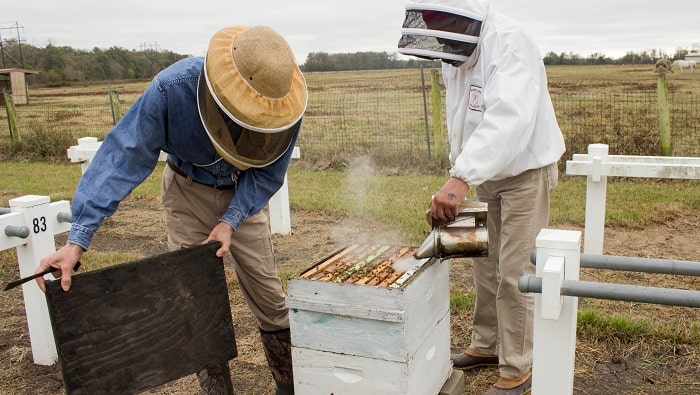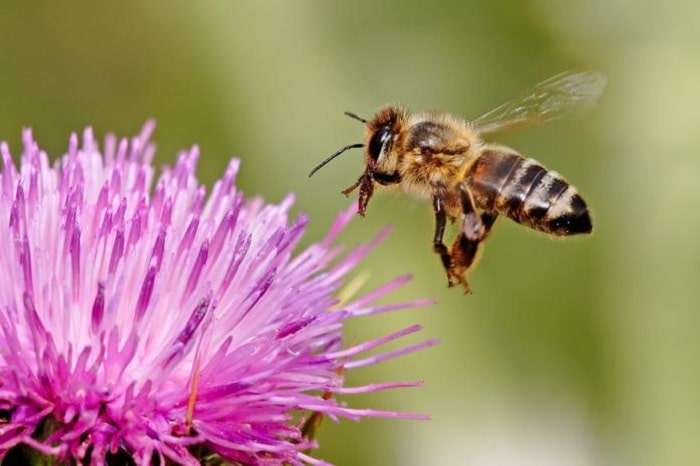Do you want to raise bees in your backyard? Almost anyone can learn the skills required to be a competent beekeeper. Preparation is the first step toward effective beekeeping. Before your bees arrive, you should learn everything you can about bee hive management. Here are some things to think about how to raise bees for honey?
Beware of the laws
Your county or municipality may have beekeeping regulations, such as the number of hives you can keep. There could even be a law outlawing beekeeping. Aside from the legalities, it is critical to ensure that your neighbors are comfortable with, and not strongly opposed to, your beekeeping in the neighborhood. Make an effort to be a good neighbor. Place your colonies with caution in as to prevent causing problems for others in the vicinity.

Comprehend the flight path of the bees
Bees will follow the shortest route possible from their food source to the hive. This can sometimes cause disturbances to humans, animals, and pets. In addition, bees defecate while flying to find food and water. This has the potential to stain car paintwork and leave colored marks on everything below. If the bees are flying across a walkway, consider erecting fencing or tall vegetation near the hives to encourage the bees to acquire altitude rapidly. This will assist in keeping everything safe.
Choose the location
Bees require four things.
- First, they require sunlight, or midday shade if the weather is scorching.
- Second, they must have easy access to clean water close to the hive. You can use a huge plant saucer with stones in the center for the bees to settle on, and keep the water refilled every day. A shallow bubble fountain might also work well.
- Third, the hive must be sheltered from the wind, which can blow rain (or snow) into the hive and make it more difficult for the bees to keep the hive warm.
- Finally, bees require solitude. Place the hives away from high-traffic areas, play spaces, swimming pools, and pet areas. Allow ample bee room for each hive—ideally, 50 feet away from high-traffic areas—but if space is restricted, put the hive such that the entrance is near a tall fence or hedge. This will force their flight path overhead in order to avoid collisions with people and pets.
Know your flowers
Honey is made by bees from floral nectar. This is found in plants including white clovers, asters, dandelions, maple trees, citrus trees, and others. After a while, you will be able to tell when there are large nectar flows and when there are not.
Before getting bees, make sure they have a safe, natural environment. Pesticides on flowers are a primary cause of honey bee deaths. Check to see if there are any huge areas around you that are being treated with commercial insecticides. If a worker bee is not killed on the spot by the poison, she may bring it back to the hive and kill the other bees and even the queen.

>>> Read more: How To Start Beekeeping Beginners
Where to buy bees
Buying bees is the simplest and safest option for a new beekeeper to start an apiary. Package bees or a nucleus hive are the two most popular methods of receiving bees.
- Package Bees
Contact a local beekeeper supplier or a local beekeeping group to order a package of bees. The majority of packages will include a queen, several workers, and a feeder filled with sugar syrup. The bee provider will give you instructions on how to place the package bees in their new home and introduce the queen bee to the workers. The indirect method is the most commonly method of introducing a queen. The worker bees get to know the new queen as they eat their way through the food plug in her cage.
- Nucleus Hive
You can also order a nucleus hive. A nucleus is the size of a half-sized colony. A 5 frame nuc is the most frequent size. You will receive 5 comb frames, bees, honey, a queen, and brood (baby bees). Buying a nuc allows you to get a head start on colony expansion. This method, however, is riskier than package bees since the honeycomb might carry parasites and disease from the donor colony to your hive.
The time to place your bees in their hives is in the spring, when flowering flowers provide a food supply. Once you have decided how to obtain them, the best chance for installation instructions is to rely on your supplier.
Feed the bees
Young colonies must work hard to store pollen and nectar, seal all the cracks and seams in their new home, and care for the queen and new offspring. You can feed them a “nectar” to help them acclimatize. Here is how to do it:
- Fill the quart jars with an equal mixture of granulated sugar and water.
- Place the feeder lids on top and invert the jars into the holes. The lids should be barely damp, not dripping.
The bees will drink from the lids as much as they require. Nucs initially drink around three-fourths of a quart jar per day. Over the next three weeks or so, it gradually decreased to the point where we recognized sugar water was no longer required. Flowers provided sustenance for the bees. Furthermore, sugar water produces insipid honey and should be avoided if not required.

>>> View more: Top 5 Best Beekeeping Books For Beginners
Inspect the hives inside and out
A large part of beekeeping consists of simple observation and response. If you are a beginner beekeeper, inspect the hive once a week for a couple of months to learn. Once you are at ease, reduce your frequency every two weeks. Check that the outside of the hive is clean and clear of bee dung, that the landing board is clean, and that there are no ants in the hive. Check the frames for larvae and eggs when you open the hives.
Check for pests and pathogens on a regular basis.
Varroa mites are the most common pest encountered in hives. They can weaken and finally kill the hive if left unchecked. Other pests to keep an eye out for are the little hive beetle and the wax moth. American and European foulbrood are two diseases to be aware of. Early intervention is frequently the difference between a healthy and a dead hive.
When necessary, expand the hive.
Begin with a single deep hive body-brood box. Top it with a second brood box when the bees have filled it with 7 or 8 frames of bees and brood. Allow the bees to develop brood cells in the second brood box as well. When the second brood box is full (7 or 8 frames of bees), top it with a queen excluded, if using one, and then the honey super (the box from which you will collect most of your honey).
Conclusion
This tutorial discusses how to begin beekeeping, how to select a location, how to check and observe bees, how to acquire bees, and so on. We hope this information is beneficial to your beekeeping endeavors. We wish you a bountiful harvest of honey.
